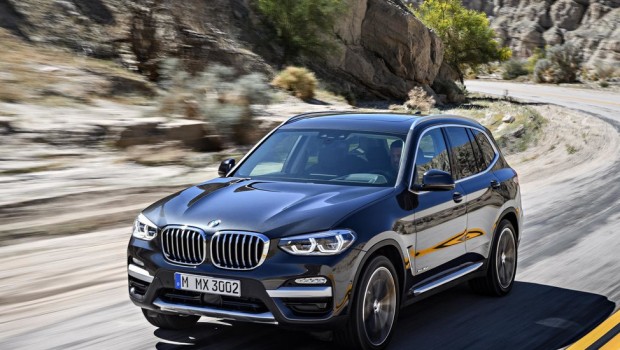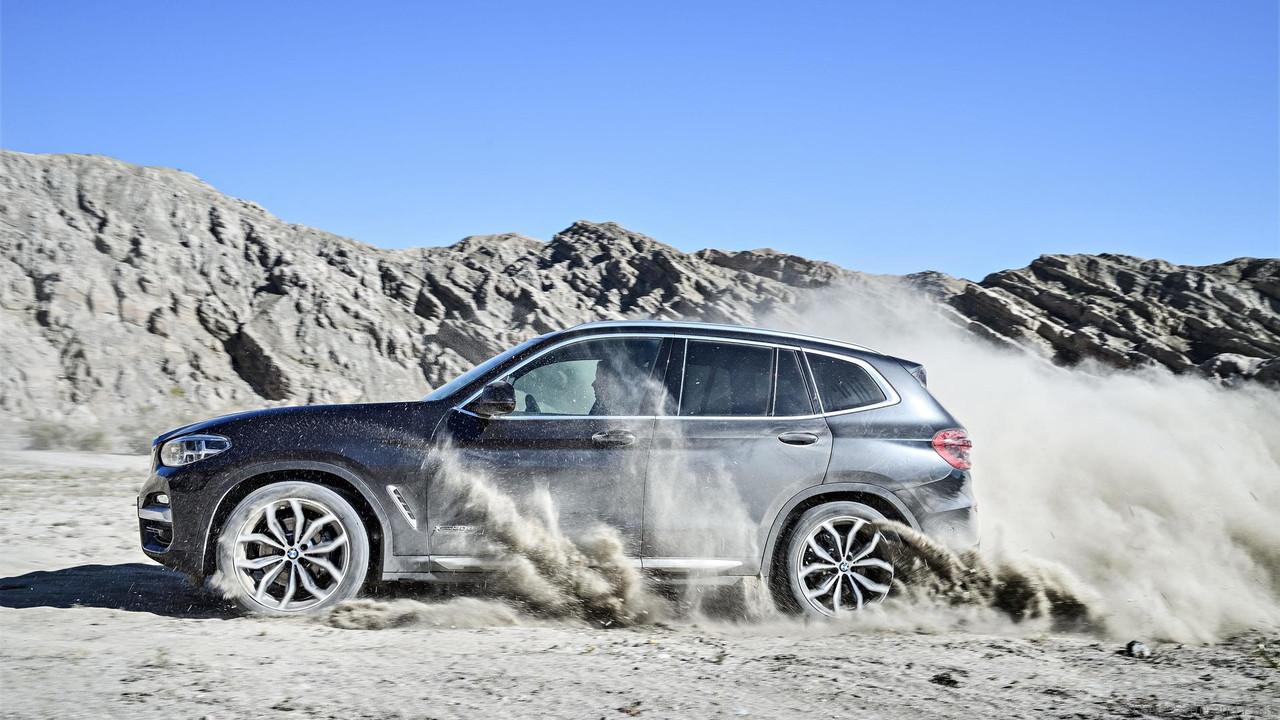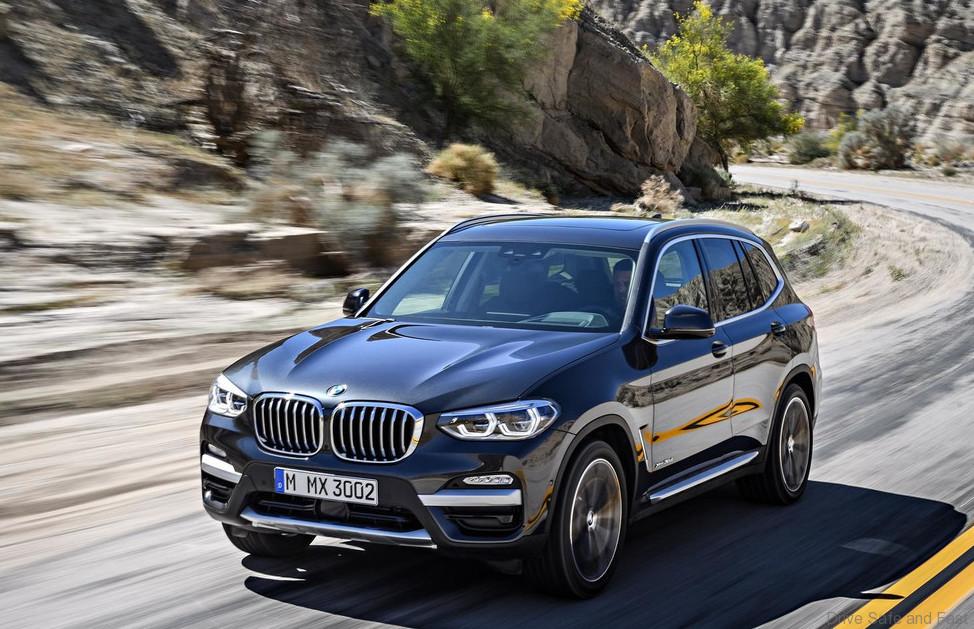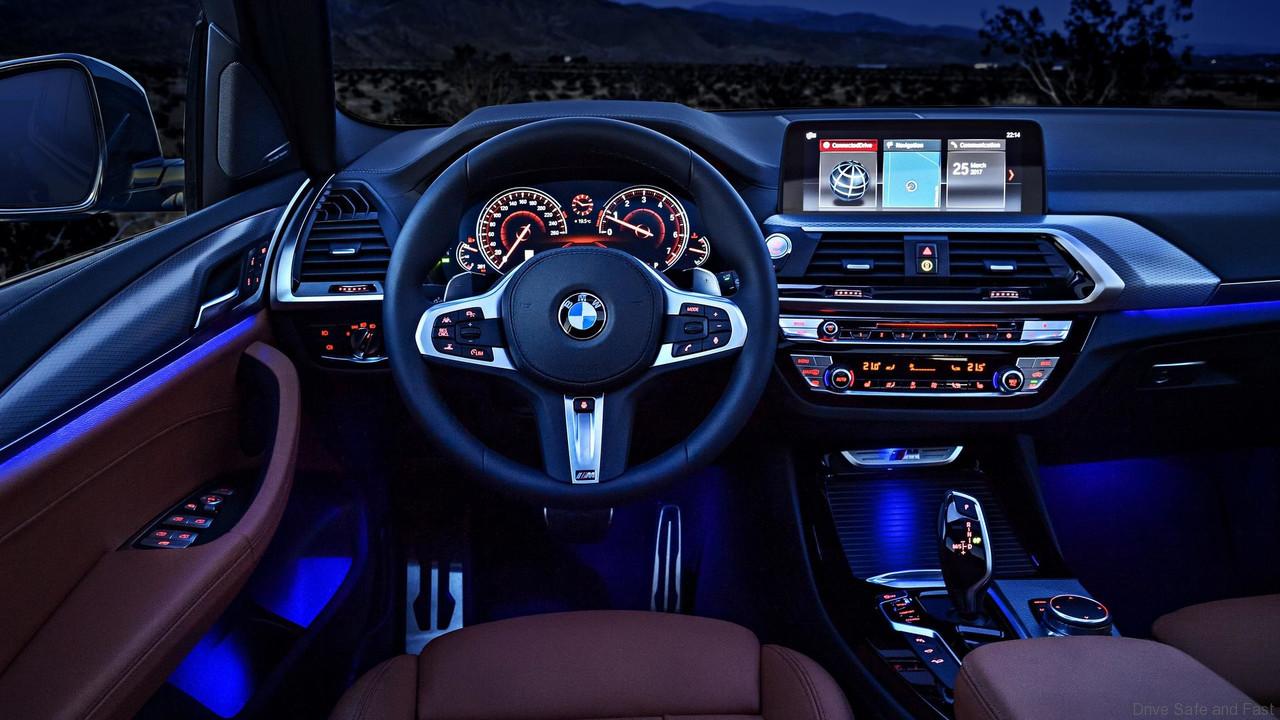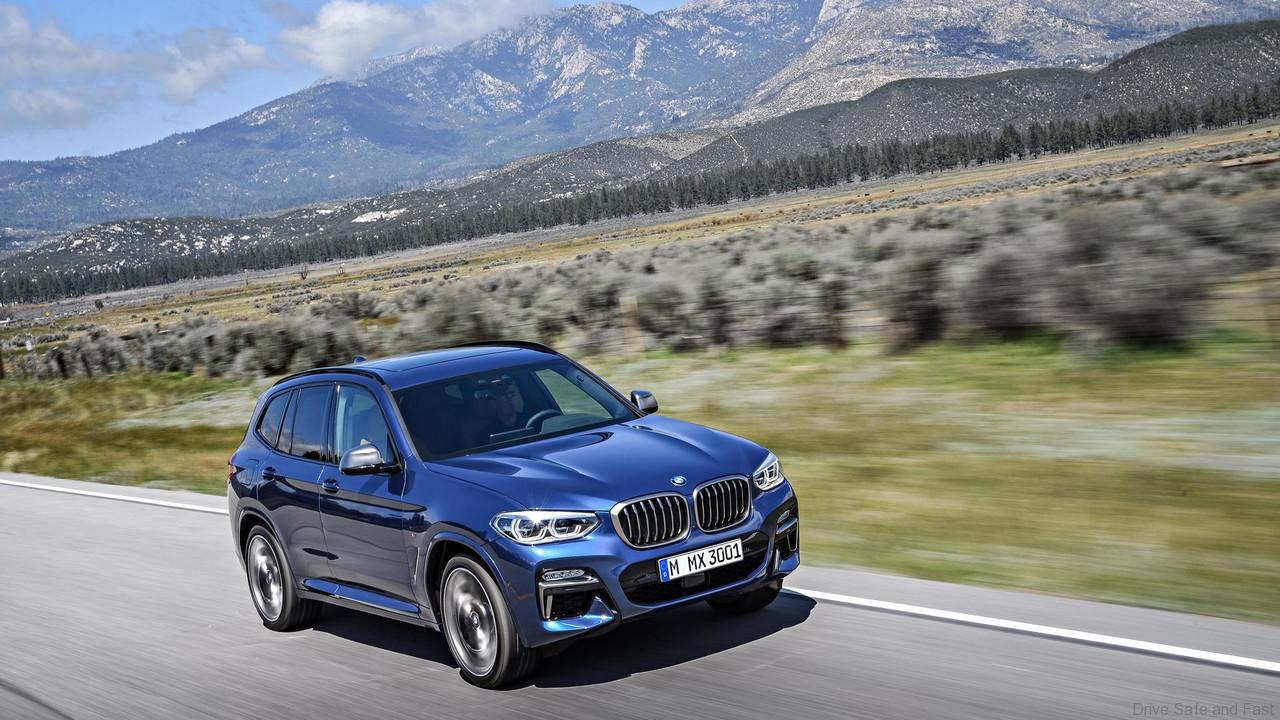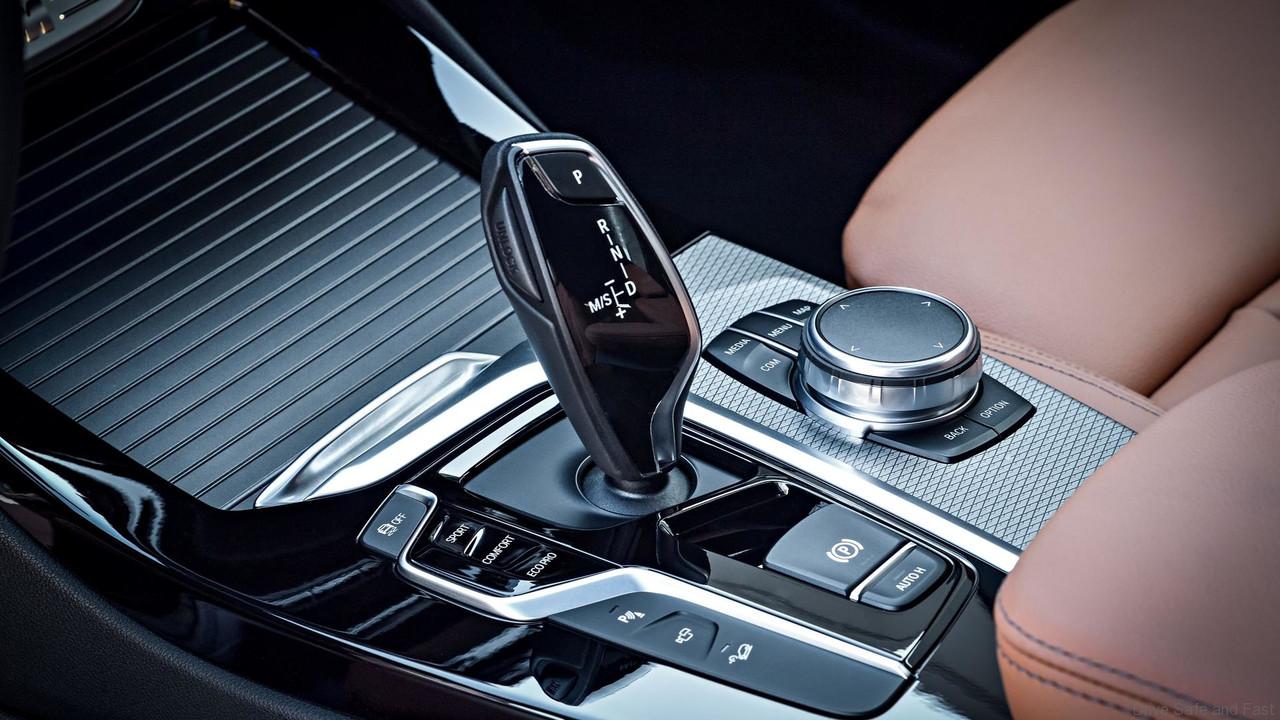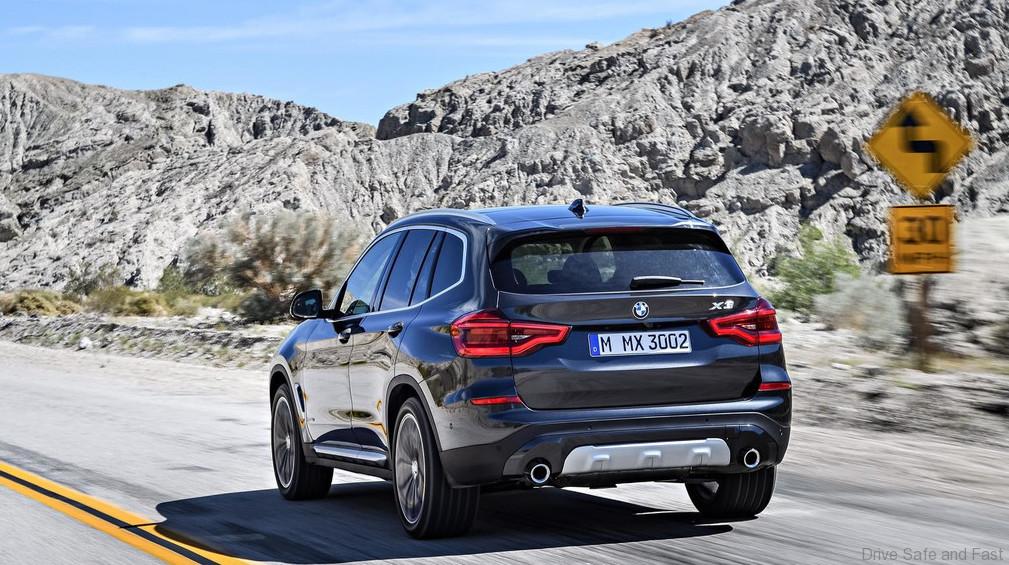BMW X3’s 2018 Model Unveiled in Full
The BMW X3 was the car that launched the mid-size SAV (Sports Activity Vehicle) segment in 2003. Since then, BMW has recorded more than 1.5 million new registrations of the X3 across the two model generations so far. And now the new BMW X3 is set to write the next chapter in this success story with an even more striking, dynamic design language, powerful yet also efficient drive systems and luxurious appointments. Like all members of the successful X family, it blends standout driving qualities on any terrain with unrestricted everyday usability.
Sharper design and three model variants
The third generation of the BMW X3 follows in its predecessors’ tyre tracks by combining rugged off-road looks with a sporting presence. Its familiar proportions, including very short front and rear overhangs, shine the spotlight on the perfect 50:50 distribution of weight between the front and rear axle. The potent dynamic intent of the new BMW X3 is highlighted by a chunky kidney grille and foglamps featuring a hexagonal design for the first time on a BMW X model. At the rear, the light clusters (whose three-dimensional look in optional full-LED guise give them considerable visual impact), markedly downward-sloping roof spoiler and twin exhaust tailpipes bring matters to a suitably muscular conclusion.
The xLine, M Sport and Luxury Line trim variants (the latter is a new addition to the line-up) and the range of BMW Individual items enable the appearance of the BMW X3 to be adapted even more precisely to the customer’s personal tastes. In addition to the standard 18-inch light-alloy wheels (previously: 17-inch), customers can dip into the options list for wheel/tyre combinations in sizes up to 21-inch. As well as making various exterior tweaks, the three trim variants also adapt the ambience inside the car to their particular themes. The interior of the new BMW X3 displays unbeatable fit and finish and material quality, and is even classier and more luxurious than its predecessor. Comfort levels are further elevated by a host of new equipment options like three-zone automatic climate control, the Ambient Air package, active seat ventilation, the cargo function of the standard 40:20:40 split/folding rear seat backrests and the panoramic glass roof that brings extra airiness to the interior and further enhances perceived quality.
Another new equipment item is the optional BMW Display Key, which not only locks and unlocks the BMW X3 by radio remote control, but also shows a variety of status information on the car and serves as the control unit for the optional auxiliary heating, for example.
Optimised combination of dynamic sharpness and ride comfort
The BMW engineers have employed far-reaching chassis modifications to significantly improve the driving dynamics, directional stability and steering feel of the new BMW X3. The car that emerges is even sportier than its predecessor, yet avoids compromising on ride comfort. Chassis options include M Sport suspension, Dynamic Damper Control, M Sport brakes and variable sport steering.
Even more efficient line-up of engines and intelligent lightweight design
Two diesel engines and three petrol units will be available from launch (or shortly afterwards) for the new BMW X3. The 265 kW/360 hp BMW X3 M40i (combined fuel consumption: 8.4 – 8.2 l/100 km [33.6 – 34.5 mpg imp]; combined CO2 emissions: 193 – 188 g/km) gives the X3 range its first M Performance Automobile and is joined by a second petrol model in the shape of the BMW X3 xDrive30i producing 185 kW/252 hp (combined fuel consumption: 7.4 l/100 km [38.2 mpg imp]; combined CO2 emissions: 168 g/km).
The two diesel models are the BMW X3 xDrive20d with 140 kW/190 hp (combined fuel consumption: 5.4 – 5.0 l/100 km [52.3 – 56.5 mpg imp]; combined CO2 emissions: 142 – 132 g/km) and the BMW X3 xDrive30d developing 195 kW/265 hp (combined fuel consumption: 6.0 – 5.7 l/100 km [47.1 – 49.6 mpg imp]; combined CO2 emissions: 158 – 149 g/km).
The BMW X3 20i with 135 kW/184 hp (combined fuel consumption: 7.4 – 7.2 l/100 km [38.2 – 39.2 mpg imp]; combined CO2 emissions: 169 – 165 g/km) and choice of all-wheel drive or rear-wheel drive (not in Europe) will follow shortly after the launch of the new X3. All the engine variants will team up as standard with an optimised version of the eight-speed Steptronic transmission.
The rigorously applied BMW EfficientDynamics development strategy for the new BMW X3 includes both fuel-economy-optimising powertrains and the extensive application of intelligent lightweight design measures. For example, the increased use of aluminium components in the engine and suspension has reduced the weight of the relevant assemblies. Consequently, the new BMW X3 is up to 55 kilograms lighter than the respective predecessor models in similar specification. Added to which, the new BMW X3 boasts a classbeating drag coefficient of Cd = 0.29.
BMW ConnectedDrive: semi-automated driving and cutting-edge connectivity
When it comes to the BMW Personal CoPilot features focusing on driver assistance and (semi-)automated driving, the new BMW X3 can be specified as an option with the latest generation of Active Cruise Control and the Driving Assistant Plus safety package, including Steering and lane control assistant, Lane Change Assistant (est. from December 2017) and Lane Keeping Assistant with side collision protection. This extensive line-up of assistance systems puts clear water between the new BMW X3 and its direct rivals.
The second pillar of BMW ConnectedDrive – alongside the BMW Personal CoPilot driver assistance systems – is formed by BMW ConnectedDrive Services and apps. As a result, the new BMW X3 now also features BMW Connected. Working on the basis of a flexible platform, the Open Mobility Cloud, this new integrated digital concept for enhanced personal mobility uses various touchpoints (such as smartphones and smartwatches) to integrate the car seamlessly into the user’s digital life. This means, for example, that it can transfer mobility-related information, such as addresses from calendar entries, from a smartphone into the car, enter them automatically as destinations into the navigation system and calculate the optimum departure time for the journey.
Gesture control allows various navigation and infotainment system functions to be operated intuitively using finger and hand gestures. Meanwhile, the likewise optional Voice Assistant lets the driver use everyday language to have their requests turned into the appropriate actions instead of having to use set spoken commands. And the optional Head-Up Display enables the most important driving-related information to be projected directly into the driver’s field of vision. The Head-Up Display in the new BMW X3 is unrivalled in its segment for graphics, resolution and display options.


